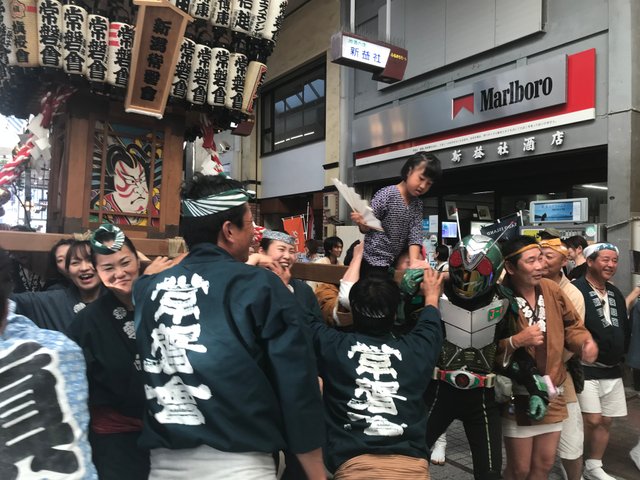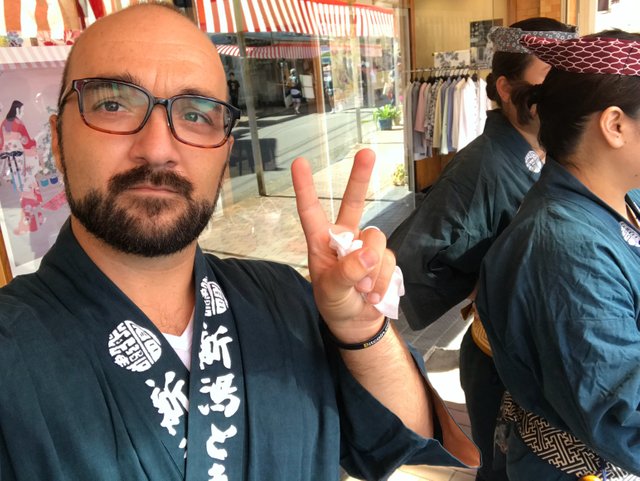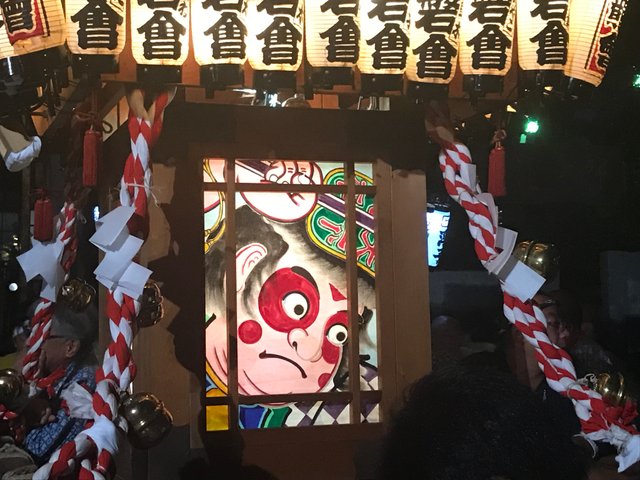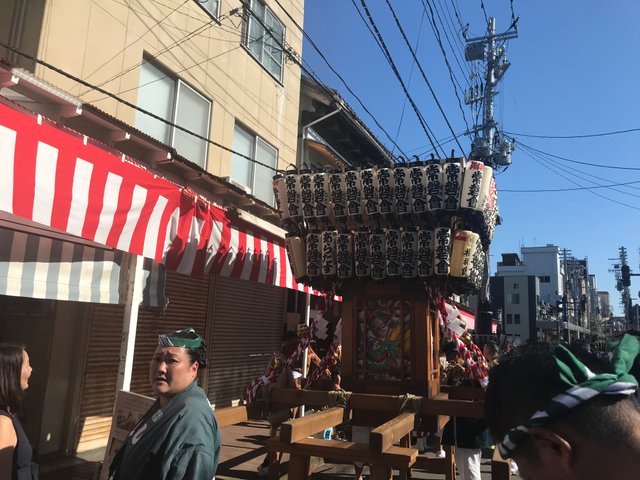Carrying a Shinto Goddess to Her Shrine

We were even joined by “Kamen Rider,” a famous superhero here in Japan!
神輿 - mikoshi - A “divine palanquin,” or portable shrine, used in festivals
The mikoshi (often referred to in the honorific, O-mikoshi) is a portable shrine used in festivals to transport the various kami-sama (gods) through the streets to a main Shinto shrine during a festival.
This year my friend Kevin and I were able to participate in this ancient Japanese custom, and we had a blast!
Being part of one of the teams that carries the mikoshi (in our case we were carrying the princess goddess Kukuri-hime) is a one-of-a-kind experience, especially for foreigners. It involved a lot of custom, ritual, specific movements and chants, and...for many (myself included!)...drinking!

Our o-mikoshi was to be carried across town, down a street that leads directly to the main Shinto shrine here in Niigata, called Hakusan Shrine. There would be two breaks along the way, which involved putting the mikoshi on two sawhorse like stands called uma (“horses”) and taking about ten minutes to eat, drink, socialize, and gear up for the next big push.
Here’s a short vid of our team carrying the o-mikoshi through Furumachi mall:
En route to the shrine, members of the team often ride on the o-mikoshi waving fans in traditional dance, and, as you may have noticed in the video, children from the crowd are allowed to ride, too.
When our team finally arrived at the shrine, I was very happy! My shoulders and legs were beginning to feel the pain! It’s not as easy as I thought it would be, and indeed, can even be a little dangerous if one isn’t familiar with the process and movements (I caught a good blow to the shoulder from one of the beams because of this).
The group must work in unison, with carriers alternating and moving from front to back of the portable shrine in succession, in order to conserve stamina. Once a member gets to the very back, he or she returns to the front, taking a short break, before manning a spot now in the front of the mikoshi.
In Japan, this unity and harmony of individuals is very important, and the culture heavily emphasizes each individual doing his or her part for society and the group. Carrying the o-omikoshi is a living symbol of this, which participants are extremely attuned to, and proud of. At least two different Japanese from the team explained this to me with an impressive kind of cultural pride during the course of the event. When the community comes to together for a greater goal, anything is possible. Even carrying god!

Our o-mikoshi lit up, and ready to be danced into its final spot at the festival, in front of the main shrine.
After our team took a much needed rest at the shrine...
...and night had fallen, we once again manned the mikoshi and began a long dance with many other shrine bearers, and their respective gods, directly in front of the main temple, as the temple leadership and Shinto priest shouted commands of keep going! you can do it! this is it, the very end!
It is traditional in many cities and festivals to rock the o-mikoshi from side to side, to entertain the god who is residing inside. Boy was this exhausting and fun all at the same time! It was so cool to see these heavy, jingly, lit up and decorated things rocking back and forth, while the crowd of spectators watched smiling, and the Shinto priest was shouting in the festive evening atmosphere!
I saw many familiar faces in the crowd, and felt special to be a foreigner taking part in such a unique and important part of the culture here.
I’ll never forget the smell of the wood and the rope, right next to my face, on the little shrine either. A very rustic, almost country—“down-on-the-farm”—type of smell. And looking down to see my feet adorned in the traditional tabi footwear of Japan, dancing to the rhythms of the drums, clicking sticks of the leaders, jingling bells and whistles of the night at the lit up shrine in the city.
It was an unforgettable experience, and I hope to join the team again next year!
Thanks for reading!
~KafkA
Graham Smith is a Voluntaryist activist, creator, and peaceful parent residing in Niigata City, Japan. Graham runs the "Voluntary Japan" online initiative with a presence here on Steem, as well as DLive and Twitter. (Hit me up so I can stop talking about myself in the third person!)

